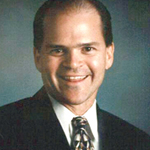Myopia in Children Can Be Cured
The incidence of myopia (nearsightedness) has risen so dramatically in our advanced culture in part, because, “We were made to be buffalo hunters, not computer operators.”
That quote comes from Versailles optometrist Dr. Rick Graebe and captures the demands placed on our visual systems in the modern world.
Research has proved that myopia is not inherited but an adaptation.
A 1968 study of 130 pre-literate adult Eskimos found that only two had myopia. But 60% of the Eskimo children, who were reading and writing in school, had myopia.
In school, children spend up to 70% of the day on close-up work such as reading, writing and working on computers.
Schoolwork and the advent of smart phones and smaller and smaller screens add stress to our visual systems.
That stress affects the focusing muscles that can make the eyeball go out of shape.
Children deal with this stress by either avoiding close-up work or taking an inordinate amount of time to complete work.
“A twenty-minute homework assignment can take two hours, which can lead to nightly homework wars,” Dr. Graebe said.
The third option calls for traditional corrective lenses, which are effective but don’t correct the problem. That’s why over time nearsightedness worsens.
But Dr. Graebe, who treats patients with Vision Therapy, a kind of physical therapy for the eyes and brain, has learned that using therapeutic lenses in younger children can fix their myopia.
A 12-year-old boy from Louisville who visited Dr. Graebe last year had 20-40 vision.
Fitted with therapeutic lenses which he used only when reading, the child returned in a year, and his vision had improved to 20-20.
This improvement can often occur within a few weeks of wearing the appropriate prescribed stress lenses.
In college, Dr. Graebe was told that what he’s doing now could never happen. Correcting myopia was impossible.
“I now see about a patient a month and treat this way, and it works,” Dr. Graebe said.

